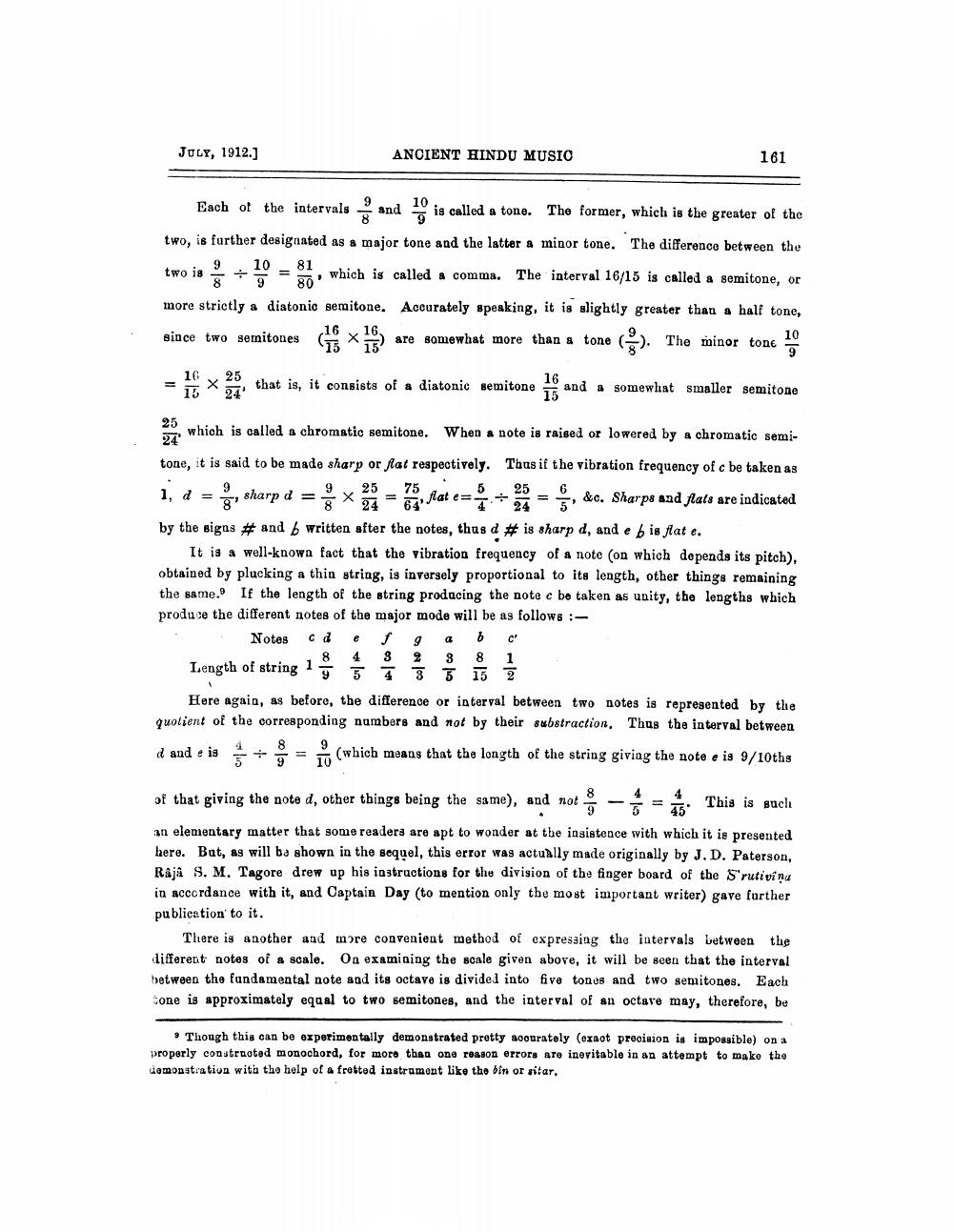________________
JULY, 1912.]
two is ÷
Each of the intervals
10
is called a tone. The former, which is the greater of the
two, is further designated as a major tone and the latter a minor tone. The difference between the
10 81 , which is called a comma. The interval 16/15 is called a semitone, or 9 80
more strictly a diatonic semitone. Accurately speaking, it is slightly greater than a half tone, since two semitones
10
×18
are somewhat more than a tone (). The minor tone 9
16 25
15
ANCIENT HINDU MUSIC
16
5
and and
X that is, it consists of a diatonic semitone 16 and a somewhat smaller semitone
15
25
which is called a chromatic semitone. When a note is raised or lowered by a chromatic semi
24
tone, it is said to be made sharp or flat respectively. 75
Thus if the vibration frequency of c be taken as
1, d= sharp d= X = by the signs # and
9 8'
9 25 24
64fat e=.
5 25 = ==, &c. Sharps and flats are indicated 4 24 5'
written after the notes, thus d # is sharp d, and e f is flat e.
It is a well-known fact that the vibration frequency of a note (on which depends its pitch), obtained by plucking a thin string, is inversely proportional to its length, other things remaining the same. If the length of the string producing the note e be taken as unity, the lengths which produce the different notes of the major mode will be as follows:
Notes Length of string 1
c d e f g a b C' 8 4 3 2 3 8 1 9 5 4 3 5 15 2
Here again, as before, the difference or interval between two notes is represented by the quotient of the corresponding numbers and not by their substraction. Thus the interval between d and e is +
==
(which means that the length of the string giving the note e is 9/10ths
9 10
8
of that giving the note d, other things being the same), and not
161
4
-
This is such
45
an elementary matter that some readers are apt to wonder at the insistence with which it is presented here. But, as will be shown in the sequel, this error was actually made originally by J. D. Paterson, Raja S. M. Tagore drew up his instructions for the division of the finger board of the S'rutiviņa in accordance with it, and Captain Day (to mention only the most important writer) gave further publication to it.
5
There is another and more convenient method of expressing the intervals between the different notes of a scale. On examining the scale given above, it will be seen that the interval between the fundamental note and its octave is divided into five tones and two semitones. Each tone is approximately equal to two semitones, and the interval of an octave may, therefore, be
Though this can be experimentally demonstrated pretty accurately (exaot precision is impossible) on a properly constructed monochord, for more than one reason errors are inevitable in an attempt to make the demonstration with the help of a fretted instrument like the bin or sitar,




